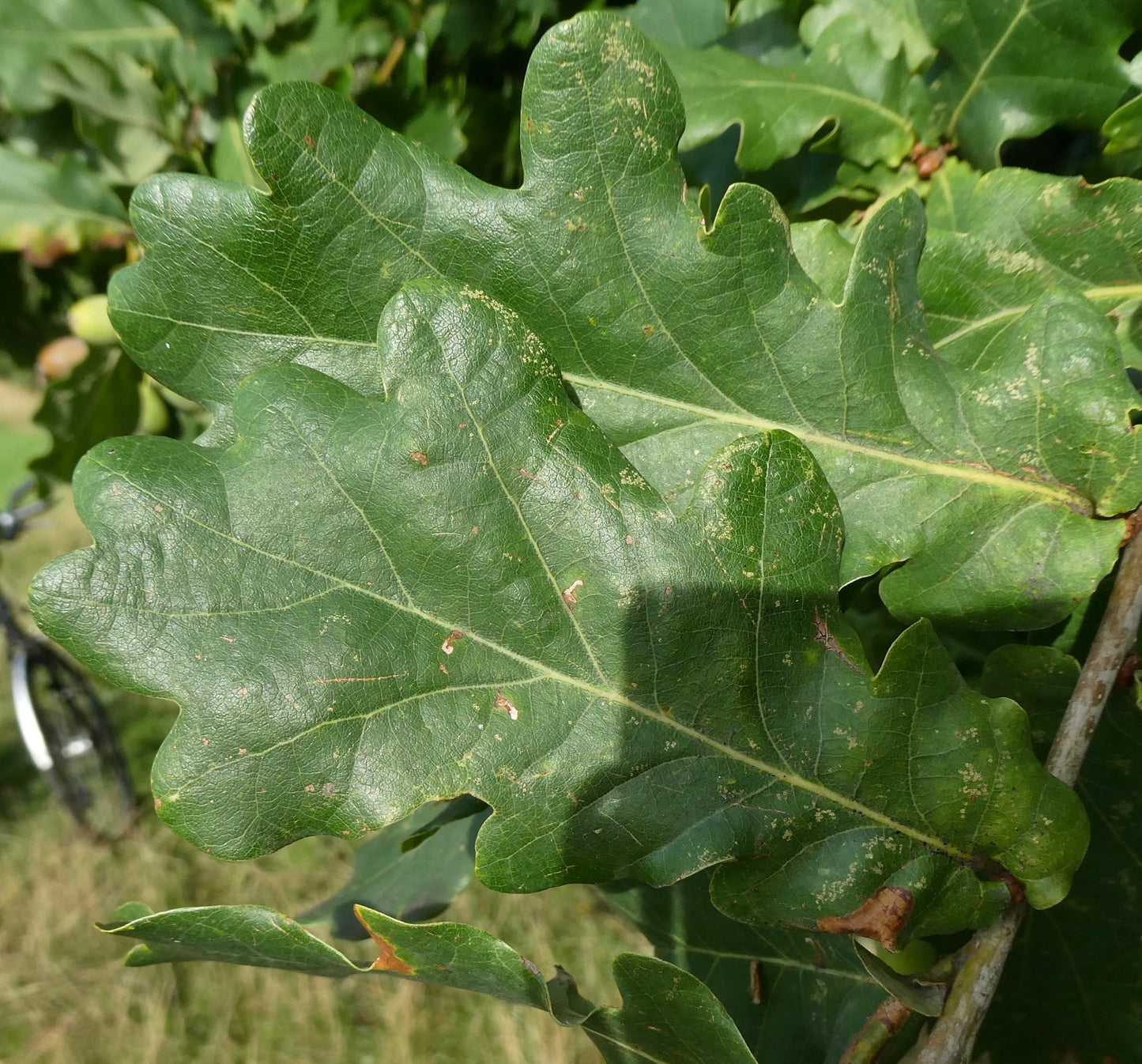- Catalogue Plants
Quercus robur
Quercus robur
Couldn't load pickup availability
Plant Description
Quercus robur, commonly known as pedunculate oak or English oak, is a majestic deciduous tree species widespread in Europe, known for its longevity, strong wood, and crucial role in forest ecosystems.
Appearance:
- Size: Quercus robur typically reaches a height of 20-40 meters, with a wide crown and sturdy branches.
- Leaves: The leaves are large, lobed, and oval-shaped, glossy dark green on the upper surface and lighter underneath. In autumn, they turn shades of red, brown, and gold before falling.
- Bark: The bark is grey-brown and becomes deeply fissured and ridged with age.
- Acorns: They produce oval acorns with long stalks, maturing in about 18 months.
Habitat and Distribution:
- Pedunculate oak is widespread throughout Europe, from northern to Mediterranean regions, and grows in a wide range of habitats, from moist forests to open areas.
Cultivation:
1. Location:
- Plant Quercus robur in an area that receives full sun or partial shade.
- Ensure the soil is well-drained and has good depth, as oak roots can be deep and extensive.
2. Soil:
- This species adapts to various soil types but prefers humus-rich, well-drained soils. Avoid excessively compacted or clayey soils.
- Good soil aeration is important for root development.
3. Irrigation:
- Young oaks should be watered regularly during dry periods to encourage healthy root growth. Once established, they are quite drought-resistant but benefit from water during prolonged dry spells.
4. Pruning:
- Pruning should be limited and primarily aimed at removing dead, damaged, or misshapen branches. Avoid pruning during months when the tree is leafed out to minimize stress.
5. Fertilization:
- Quercus robur usually does not require fertilization if planted in nutrient-rich soil. However, if the soil is poor, a balanced fertilizer can be applied in early spring.
6. Pest and Disease Management:
- This oak is generally resistant to many diseases and pests. However, monitor the tree for signs of diseases such as oak wilt and implement preventive or control measures if necessary.
7. Wildlife Protection:
- Quercus robur acorns are an important food source for many wildlife species. If you want to protect young plants from wildlife, you can use fences or other protective measures.
The pedunculate oak is an icon of European forest environments, with a long-standing presence and a wide range of ecological benefits. With proper care and suitable growing conditions, Quercus robur can become a prized element in gardens, parks, and forests, enriching the landscape and providing habitat for a wide range of plant and animal species.
IMPORTANT: Please be aware that picture 1 show adult plant not for sale, the offer is for a plant in the dimension indicated product description.
Disclaimer: Please keep on mind that the plant may have grown since pictured. Also be aware that most plants change across seasons. If present foliage could have been fallen or change in its color.
Botanical family: Fagaceae
Botanical genus: Quercus
Botanical species: Quercus robur
SKU:BA-2052-S
Cultivation
Cultivation
Additional information
Additional information
Plant Height:
Plant Diameter:
Picture Taken on:
Pot Size:
Grafted/Not Grafted:


